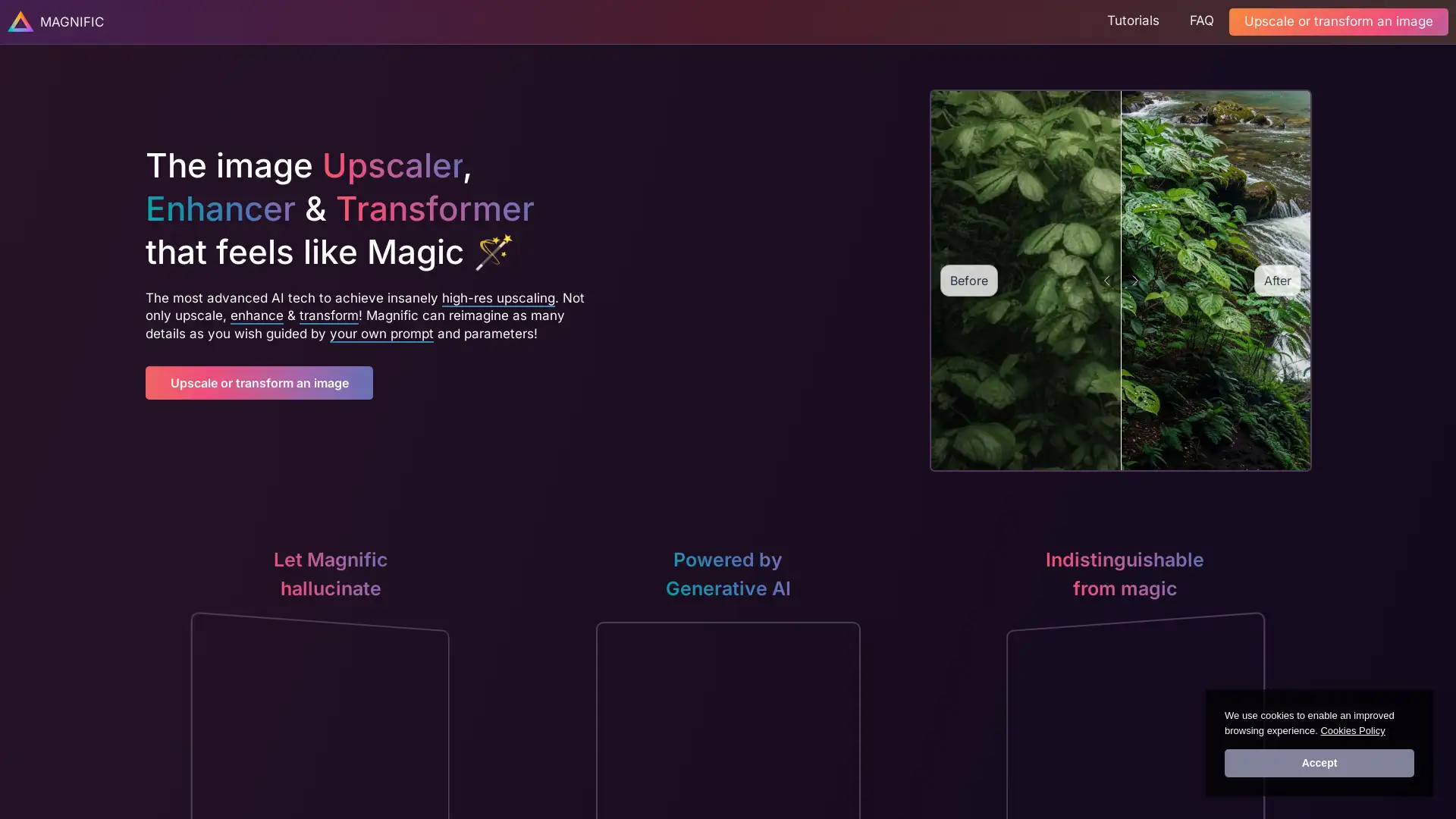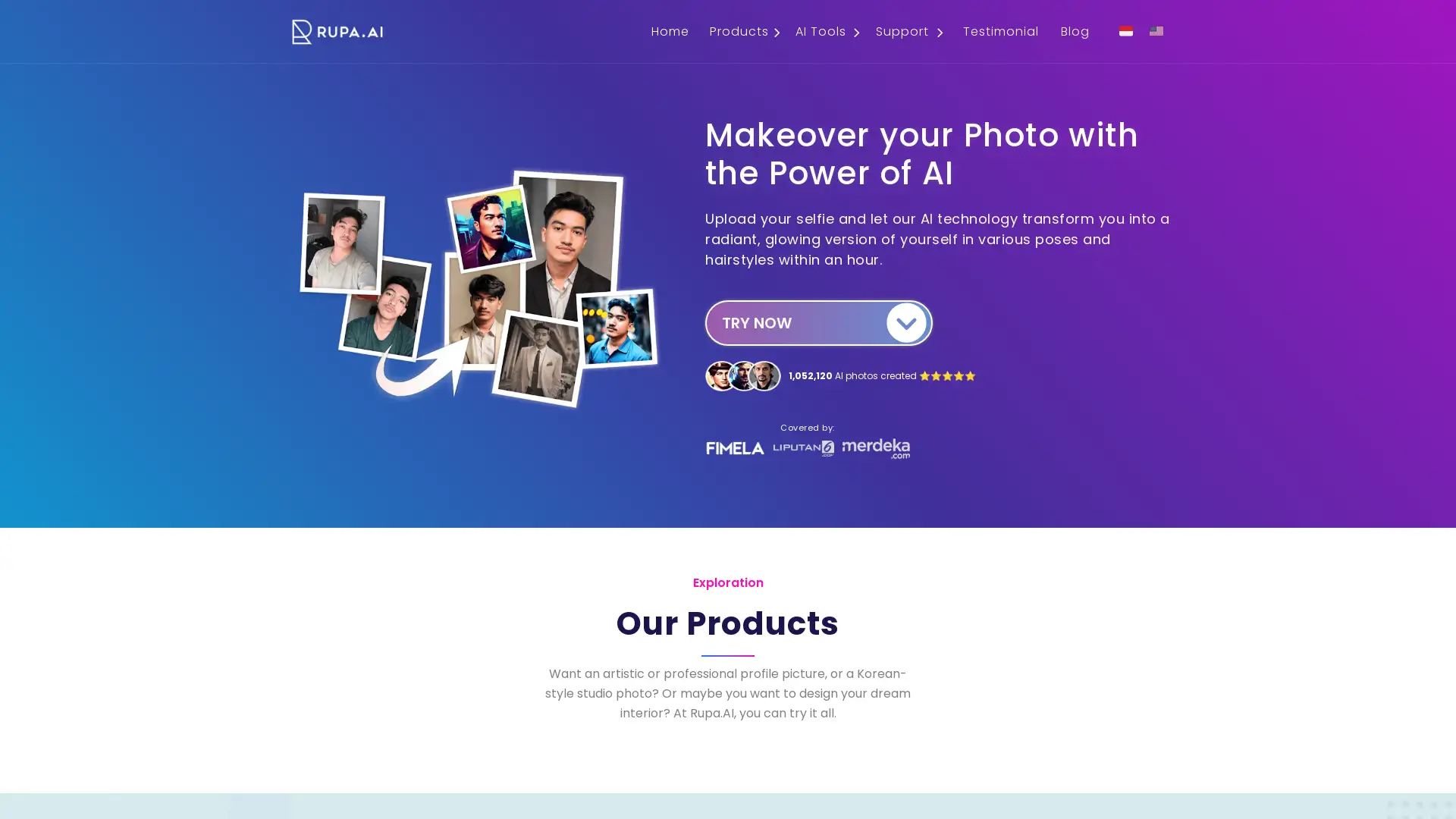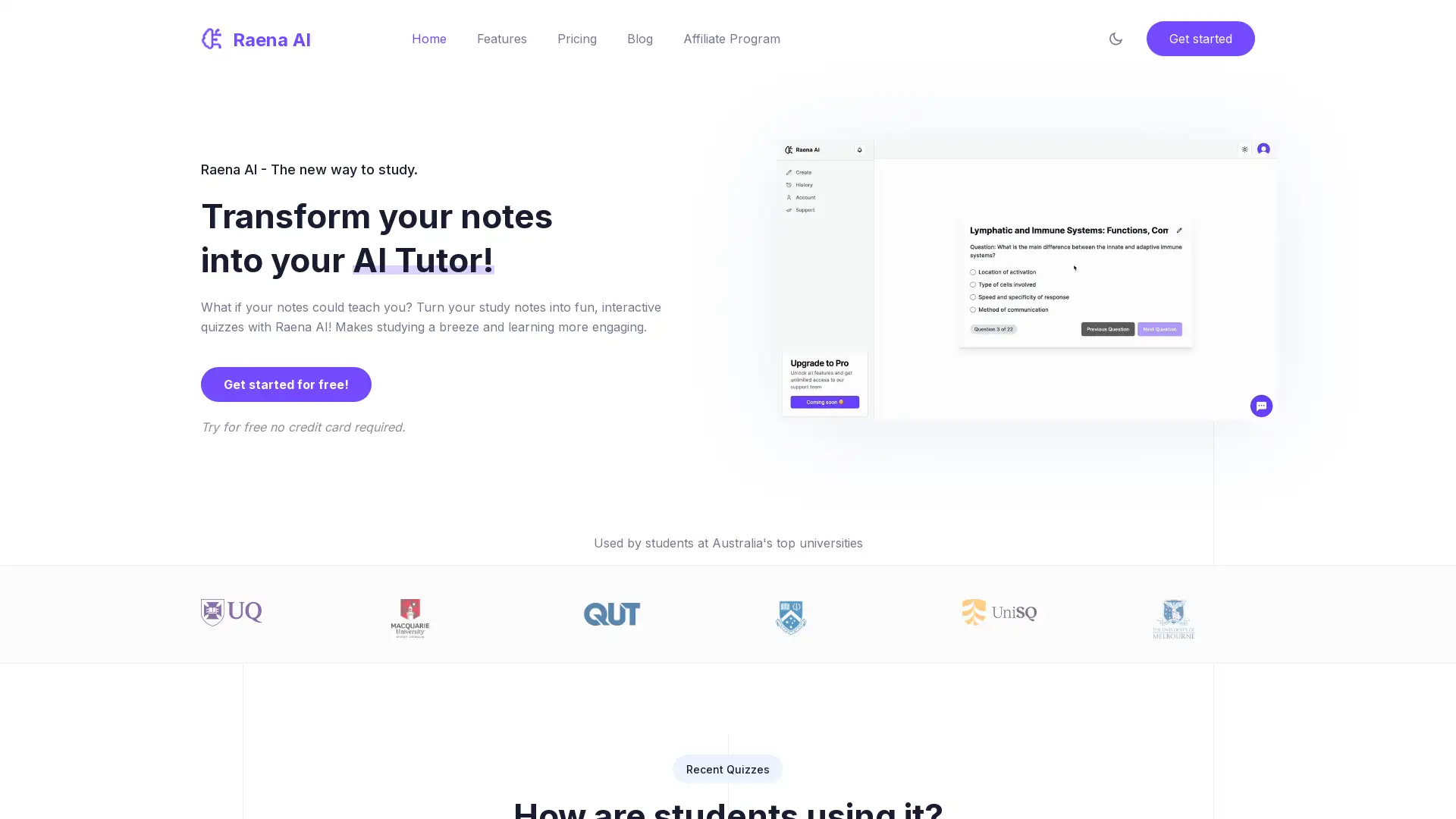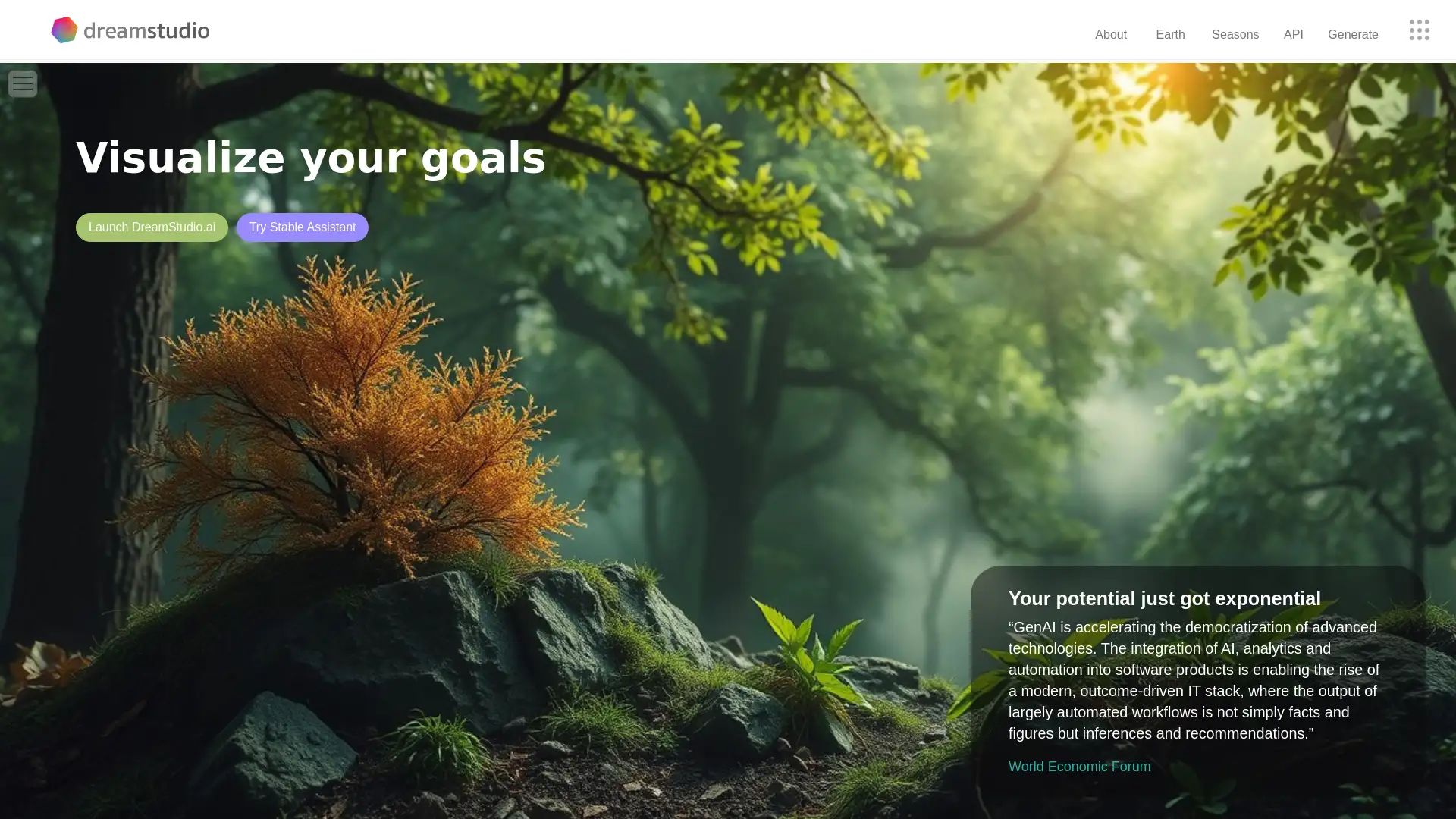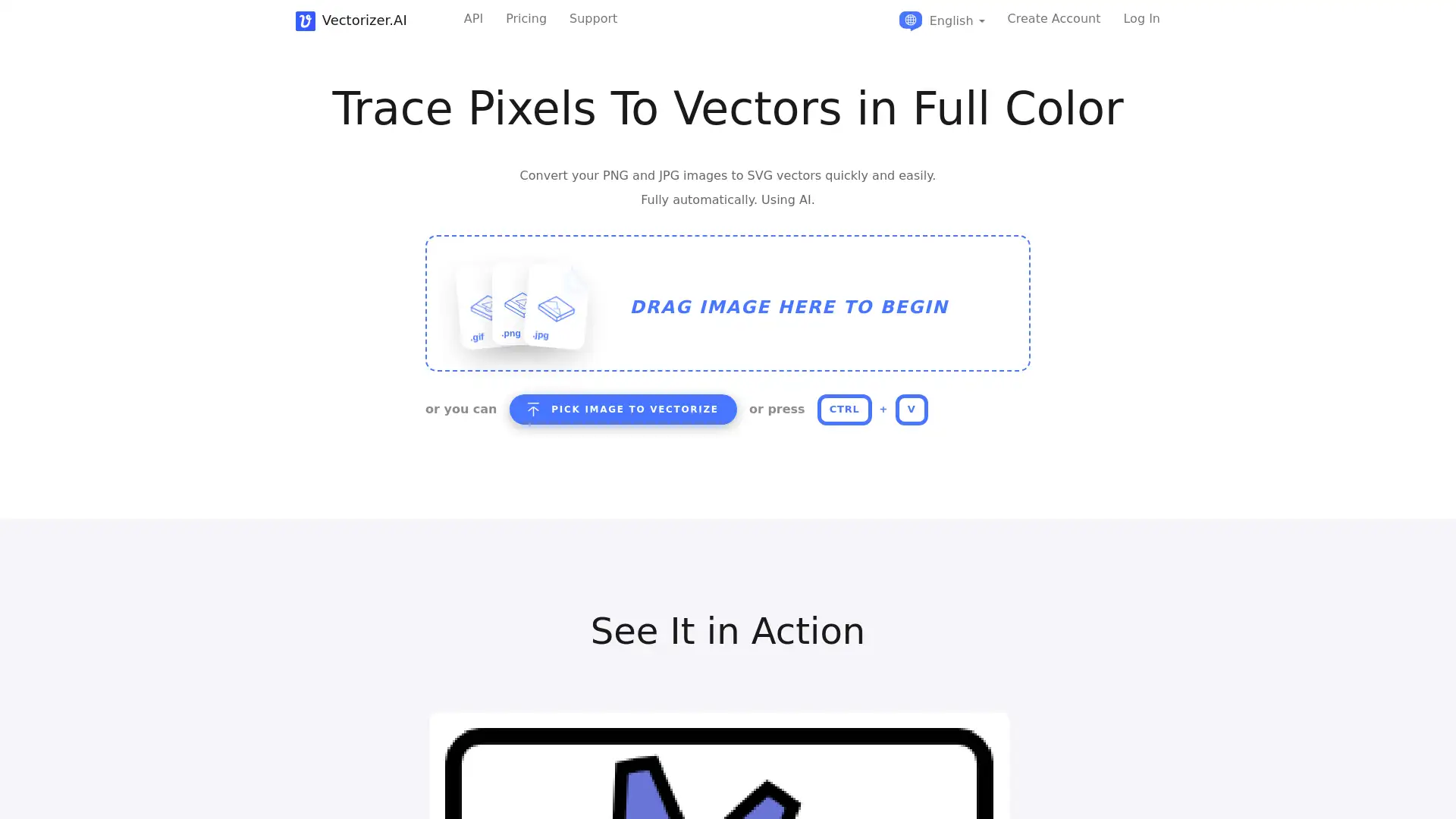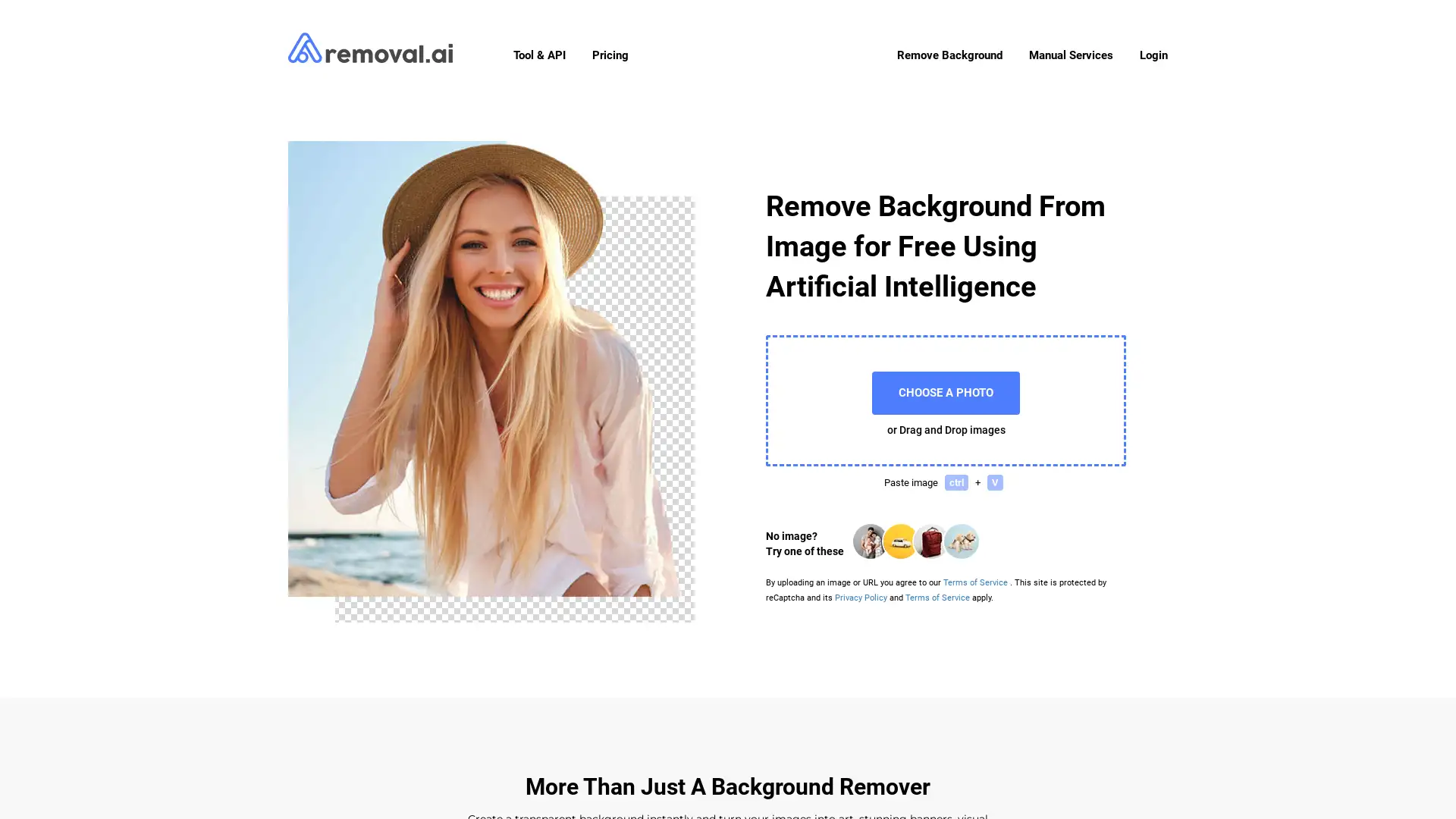Best 11 AI Tools for Image Processing in 2024
Magnific AI, Rupa AI, Raena AI, Dream Studio, Vectorizer AI, Photopea, Removal AI, Prome AI, Watermark Remover, Mira Muse AI, PNG Maker AI are among the best paid and free Image Processing tools available.
Understanding AI Tools for Image Processing
AI tools for Image Processing refer to advanced software applications that utilize artificial intelligence algorithms to analyze, enhance, and manipulate images. These tools are designed to automate complex image-related tasks, such as editing, vector conversion, and image generation, making them accessible for both creative and technical uses. The relevance of these tools is evident in their ability to unlock creativity, improve precision, and speed up processes in various fields such as design, photography, and content creation. Leveraging AI in image processing provides tailored solutions for professionals and enthusiasts looking to optimize visual content creation and modification.
Key Features of AI-Based Image Processing Tools
AI tools for Image Processing come with a wide array of features that cater to different levels of users, from beginners to experts. They offer browser-based photo editing, scalable vector conversion, and AI-powered image generation. Users can enjoy a user-friendly interface, real-time processing, and features like object detection, image segmentation, and style transfer. These tools adapt to varying tasks, from simple image enhancements to complex customizations, providing capabilities for automatic adjustments, data-driven insights, and even content-based recommendations. Their scalability and integration with existing workflows make them highly versatile.
Who Can Benefit from AI Image Processing Tools?
AI tools for Image Processing are ideal for a wide range of users. Novices can benefit from intuitive, no-code interfaces that simplify image editing and enhancement tasks, while professionals and developers can use the tools for more complex functions like automating image workflows or implementing custom AI models. These tools are particularly useful for graphic designers, photographers, digital artists, marketers, and businesses that rely on high-quality visuals. For those with coding experience, there are opportunities to dive deeper into customization, leveraging APIs and advanced configurations.
Deeper Insights into AI-Powered Image Processing
AI tools provide a transformative experience in sectors such as e-commerce, advertising, and digital art, offering customized solutions to meet specific needs. The use of AI for image analysis, editing, and creation enables companies to produce high-quality visuals quickly, enhancing user engagement. These tools are also designed with intuitive interfaces that can integrate into existing software systems, allowing for streamlined workflows and greater efficiency across various industries.
